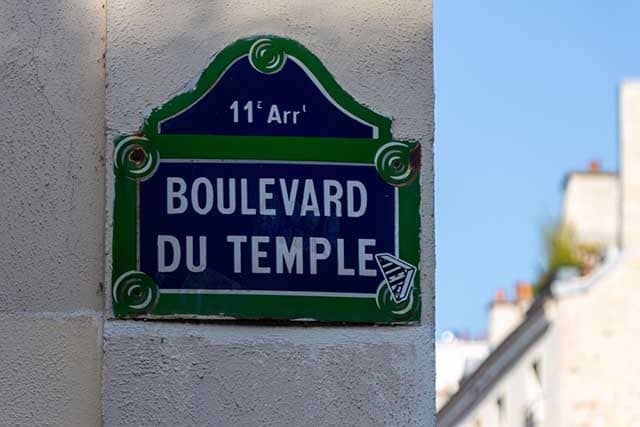You’re in Rome, the city of seven hills, with its intoxicating aroma of pizza and pasta swirling around you. You’re there, right in the heart of the city, anticipating an evening full of laughter and memories with friends over a hearty Italian meal. Everything is picture-perfect. Or so it seems until you try to decipher the address of the quaint trattoria you’re supposed to dine at: “Via del Corso 300R”. If you’re anything like me, your first thought would be, “What on earth does that mean?”
This isn’t an address like the ones we understand back in the United States. No, this is an Italian address – a cryptic code, a mystery wrapped in an enigma. Suddenly, the joyful anticipation turns into a puzzled look… You into an accidental amateur detective.
That’s exactly what happened to me the first time I was in Rome. A fine evening that was supposed to be about having a delicious meal and lots of laughs with friends turned into a game of charades with our driver. We did eventually find our way to the restaurant and the evening was saved (and made another great travel memory and story), but it reminded me that when it comes to international travel, it’s the details we overlook that often lead to unexpected adventures.

So, why are we talking about confusing addresses and my ability to get lost wherever I may roam? Because roamer, wanderer, nomad, vagabond, call me what you will, I’m all about avoiding potential travel confusion. After all, travel is about the joy of discovery, the thrill of new experiences, and the stories you bring back home… Even though those things may not be as entertaining as the ones about not about getting lost on the way to dinner.
So let’s try to gain an understanding of European addresses so when you’re in beautiful European countries you can get around like a local. The next time you’re standing in front of an Italian cab driver, you’ll know exactly what “Via del Corso 300R” means.
Understanding Addresses in France
First, let’s hop over to France, the land of romance, wine, and intricate addresses. To the uninitiated, addresses in France can be overwhelming. But fear not! Let’s break it down.
A typical French address looks like this:
24 Rue du Bac, 75007 Paris
Number and Street Name: Similar to the US, this is the building number and the name of the street. Here, ’24’ is the building number and ‘Rue du Bac’ is the street.
Postal Code and City: The next part, ‘75007 Paris’, might seem a bit intimidating at first, but it’s pretty straightforward once you get the hang of it. The first two digits ’75’ denote the department number (a geographical code) for Paris. The last three digits ‘007’ represent the ‘arrondissement’, or the city district. This number can range from 001 to 020. So, ‘75007’ means you\’re heading to the 7th district of Paris.
In smaller towns and rural areas outside Paris, the postal code will start with the department number, which can be anywhere from 01 to 95, followed by the three-digit code for the local area. For instance, ‘06400’ would be a postal code for Cannes, where ’06’ is the department number for Alpes-Maritimes, and ‘400’ represents the local area.
Understanding the structure of French addresses can be a real game-changer in your travels, taking you from a confused tourist to a confident traveler navigating the city streets with ease. So the next time you find yourself on a scenic boulevard in Paris, rest assured, you’ll know exactly where you’re going… Or at least the GPS on your phone will.
Travel inspiration you’ll actually want to read
The Weekly Navigator is full of trip ideas, insider tips, and unforgettable destinations—no fluff, just the good stuff. Subscribe today!

Navigating Addresses in Spain
Bienvenidos! We now journey to Spain, known for its vibrant culture, delicious cuisine, and unique (read: confusing!) address system. It may seem daunting at first glance, but with a bit of knowledge you’ll be able to find your way back to the point you realized you were lost.
In Spain, an address typically looks like this:
Calle de Alcalá 15, 4º 2ª, 28014 Madrid
Woah. Can you say, “confusing?”
Street Name and Number: Different from addresses in the US, the street name comes before the number. ‘Calle de Alcalá 15’ represents the street name followed by the building number. ‘Calle’ is Spanish for ‘street’, so ‘Calle de Alcalá 15′ translates to ’15 Alcalá Street’.
Floor and Door Number: Here’s where it gets a little confusing. The ‘4º 2ª’ part denotes the floor and door number. The ‘4º’ means the 4th floor, while the ‘2ª’ means the 2nd door on that floor. Formatting the addresses this way helps you not just find the right building but also the right apartment or office in a building.
Postal Code and City: Lastly, ‘28014 Madrid’ is the postal code and the city name. ‘28014’ is the postal code for a specific area in Madrid. In Spain, postal codes are five digits long. The first two represent the province (28, in this case, is Madrid), while the other three specify the municipal district within the city or town.
Understanding this structure is invaluable for confidently navigating Spanish addresses. Now the next time you see an address like this, you’ll know exactly how to get to your destination. And who knows? Maybe you’ll end up impressing the locals with your navigation skills, too!
Cracking the Code of Addresses in Italy
Andiamo! We’re now off to Italy, the land of la dolce vita, captivating history, and some surprisingly complex addresses. Had I thought ahead and researched European addresses I would have been navigating Italian addresses as smoothly as a gondola gliding through the Venetian canals. Maybe next time.
Here’s a typical Italian address:
Via del Corso 418, 00187 Roma RM, Italy
Street Name and Number: Just like Spain, ‘Via del Corso 418’ indicates the street name followed by the building number. ‘Via’ is Italian for ‘street’, so ‘Via del Corso 418’ translates to ‘418 Corso Street’.
Postal Code, City, and Province: The part ‘00187 Roma RM’ might seem puzzling, but it’s simpler than you think. ‘00187’ is the postal code of the area within Rome. The ‘Roma’ is, of course, Rome, the city. The ‘RM’ stands for the province of Rome, similar to a state abbreviation in the US.
You may occasionally come across an additional letter or number with the street number, such as ‘418R’ or ‘418/4’. The ‘R’ or ‘rosso’ refers to ‘red’ in Italian, and means that the building is part of the commercial, rather than residential, numbering system on the street. The slash and following number (/4) indicates the fourth unit or apartment within the building.
By understanding the components of an Italian address, you’re already one step ahead in navigating your way around this beautiful country. With your new found confidence you’ll not only be able to find your destination but also enjoy the journey of getting there, true to the Italian spirit of la dolce vita.
The Value of Mastering Addresses
When you get to any of these destinations, you’ll have a better chance of finding your way than I did. Now that we’ve learned how to navigate the romantic streets of Paris, the vibrant avenues of Madrid, and the historic lanes of Rome, you certainly understand the value of understanding European addresses. In case you’re not convinced, just think about how ridiculous I must have looked gesturing to a man who was doing his best to understand where I wanted to go.
That alone should make you realize the benefits of being able to decipher a weird looking address but avoiding embarrassment is only one reason. Here’s some others:
1. Confidence in Navigation: You’ll know exactly where you’re going which will make your travel experience more comfortable and enjoyable.
2. Saving Time: More time to enjoy the Louvre, less time lost on the streets of Paris.
3. Enhanced Travel Experience: Interact more confidently with the locals, understand their way of life better, and make unforgettable memories.
If you have any questions about a European vacation, our specialty at JJ Travel Associates is planning unforgettable experiences and helping you fall in love with the world, one address at a time. Call Jennifer at JJ Travel Associates: 844-483-6669.

